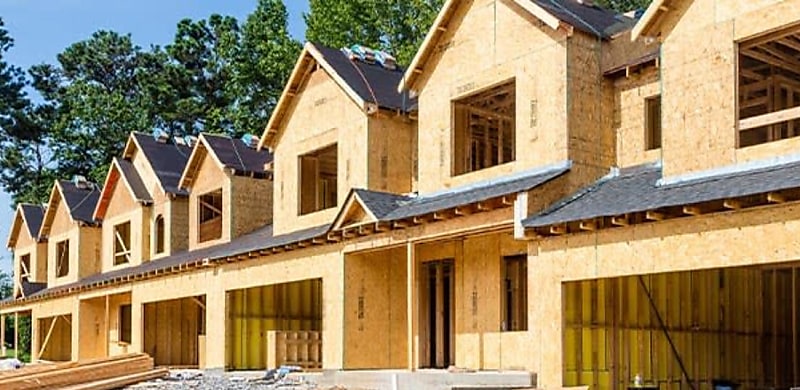
The increase in building approvals in October is a sign of the returning economic stability and greater construction confidence, according to brokers.
A returning stability to the economic landscape is the driving force behind an increase in the total number of dwellings approved, according to brokers.
In light of the Australian Bureau of Statistics recent building approvals data that was released yesterday (30 November), which found the total number of dwellings approved had risen 7.5 per cent in October, brokers revealed they were seeing a similar uptick, which they attributed to both a returning sense of stability to the economy and renewed confidence in the construction industry.
Founder and chief solutions officer at Cinch Loans, Suvidh Arora, said that despite there traditionally being a seasonal increase towards the end of the year, he believed it was being exacerbated by people who had held off on construction over the past six to nine months due to uncertainty in the industry, but “now that little bit of confidence is coming back”.
Mr Arora added: “I think there’s a couple of factors. There is a lot of vacant land that people haven’t started construction on, so they want to get them done as quickly as possible and just generally as well, all of the stability that’s coming back with interest rates expected to go down.
“I think we’re towards the end of the period where everyone was sort of tentative about what’s going to happen and the confidence is increasing and people are also seeing that immigration numbers are also starting to increase and the demand will go up for housing.”
He also commented that the increasing cost of rent meant that developers in particular wanted to get the construction started as soon as possible so they can “start earning money and cashing in on that”.
“The recent uncertainty with the construction industry is also leading to it, with a few months ago there was a lot more uncertainty as prices were escalating quite a lot in the construction space, so that’s why I think people were holding back, holding off constructing and are back now that there’s a bit more stability around the price, again that confidence is returning and they just want to get on with it,” Mr Arora stated.
Zac Goodman, director at Mortar Finance, agreed and added that he believed the October increase was “not from any sort of fiscal decisions or government that have been recently made”, but instead that the construction backlog was improving.
He commented that governments seemed to be catching up on the backlog and revealed that he had a client who saw his subdivision approved within 24 hours.
“What that says to me is either one of two things, the governments caught up on the backlog or they’re removing some red tape to simplify the approval process on single developments,” Mr Goodman noted.
“I think that overall the clear message from government is that we’re trying to fix the supply issue, that they really want to make sure that there is more property accessible to market and they’re doing that through stimulating the building industry and simplifying the development activity.”
The ABS’ October data revealed the number of dwellings approved rose 7.5 per cent in October, in seasonally adjusted terms, up from a 4 per cent decrease in September.
Daniel Rossi, ABS head of construction statistics, said: “Approvals for private sector dwellings excluding houses increased 19.5 per cent, following a 3.4 per cent fall in September.
“Approvals for private sector houses rose 2.2 per cent, following a 4.7 per cent September decrease.
“Despite the monthly increase, total dwellings approved have been low this financial year. In original terms, 55,029 dwellings were approved between July and October in 2023, compared with 65,599 over the same period in 2022.”
The increase in total dwelling approvals was powered by increases in Western Australia (up 11 per cent), Queensland (up 10.7 per cent), and NSW (up 9.6 per cent).
The ABS revealed falls in dwellings approved were recorded in Tasmania (down 14.4 percent), South Australia (down 7.2 per cent), and Victoria (down 1.4 per cent).
October ABS also found that the value of total building approvals rose 6.7 per cent, following a 5.3 per cent fall in September with the value of total residential buildings increasing 7.0 per cent, consisting of an 8.9 per cent increase in new residential buildings and a 3.2 per cent decrease in alterations and additions.
[Related: Construction costs stabilise bringing renewed demand]
